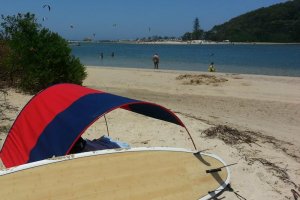The Most Liveable Region in Australia

The Gold Coast has such a wonderful natural environment, emerging Knowledge economy, Health precinct, University hub gives it the ingredients to be a beautiful ‘liveable city’.
The Gold Coast 2018 Commonwealth Games is just around the corner and the Gold Coast has driven an ambitious investment program to ensure it is ready to step out onto the world stage come April.
The Gold Coast stretches along 57 kilometres of coastline with 260 kilometres of navigable waterways, 21,000 hectares of parks, and 100,000 hectares of world heritage-listed rainforest on its doorstep which paints a picture of one of Australia’s most biodiverse cities.
These natural assets have helped to attract 13 million visitors to the city each year, and built a thriving marine sector that draws in super yachts from around the world.
In a city blessed with sunshine, it’s no surprise that the natural environment has become the stage for artistic and cultural performance. From Berlin Dance Company’s 48-hour performance in an estuary to the incredible installations peppered along the beach for Bleach* Festival, the physicality of the outdoors translates into the arts and culture on offer.
The City of Gold Coast is 100% behind the industry, investing millions in a new cultural precinct that will enhance the city’s cultural economy and create a point-of-difference across the region. Currently referred to as the Gold Coast Cultural Precinct, the centre will be the heart for arts, culture and creative enterprise.
The Gold Coast has a strong education sector, ranking as the Best Student City by the Beach in the World QS Rankings.
With three research-intensive universities, Bond, Griffith, and Southern Cross, plus more than 200 education providers, the Gold Coast offers the greatest educational choice of any city of its size in Australia.
Shannon Willoughby, CEO of Study Gold Coast, says that the Gold Coast’s focus on being the most welcoming city in Australia, its emphasis connecting students to the workforce to enhance graduate outcomes and the quality and breadth of study choices were draw cards for students.
With health now the largest employing sector on the Gold Coast, it comes as no surprise that the city is attracting internationally acclaimed researchers to its emerging research and innovation hubs.
One example is Professor Mark von Itzstein who led the team that discovered the world’s first anti-flu drug, Relenza – a major breakthrough that could save the lives of 250,000 people each year. In 2000 Professor von Itzstein founded Griffith University’s Institute of Glycomics on the Gold Coast – the only one of its kind in Australia and one of the largest worldwide.
The Gold Coast is now establishing itself as a biomedical research hub and all of the translational facilities are already in place. Within the next 10 years I have no doubt that the Gold Coast will be seen as a world-leading research precinct.
The work being done at the Institute of Glycomics is part of a large network of ground breaking research in health and medicine taking place at the city’s impressive Health and Knowledge Precinct.
Supported by $5 billion in infrastructure, including the Gold Coast University Hospital, Private Hospital and Griffith University, the Precinct has created a unique environment where researchers, academics, clinicians and business leaders can collaborate and ultimately provide some of the best services in Australia.
As cities around the world try to address the challenges faced with growing population in urban centres, the Gold Coast is tackling the challenge head-on and investing now in sustainable modes of transport that will keep the city moving well into the future.
Active travel is a big part of the Gold Coast commuter culture and has ultimately resulted in a reduction in cars on the road. Millions is currently being invested in active transport improvements to connect major public domain precincts.
At the same time, road and light rail upgrades are helping to eliminate congestion. The Gold Coast light rail project is one of biggest public transportation projects in the country, and the biggest one undertaken on the Gold Coast.
With Stage 1 complete, Stage 2 in testing, Stage 3 in planning and final stages at the core of the city’s vision for the future, the light rail is providing a sustainable transportation corridor along the city’s key economic centres and has positioned the city to support a growing population.
The Gold Coast Airport is a major drawcard for the city, providing routes to all major Australian cities and key locations internationally. In 2015/16, the Airport exceeded six million passenger movements making it the sixth busiest airport in Australia. It is preparing to undergo a $200 million redevelopment that will support growing passenger numbers and new international routes.
Health and knowledge hubs, world class transportation and a new cultural precinct are just the beginning. An overhaul of sporting facilities, Commonwealth Games Athletes Village, the largest film stage in the southern hemisphere and City funded digital infrastructure are also part of the infrastructure program.
